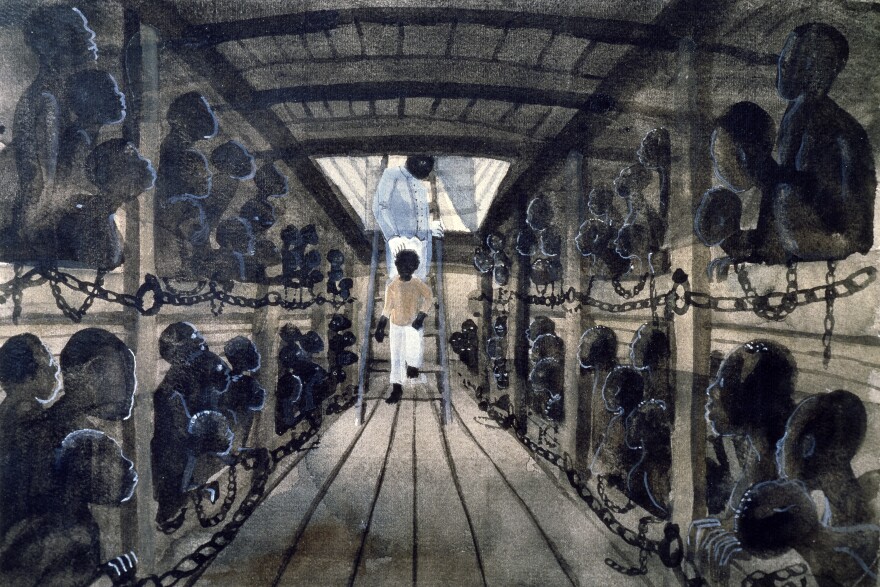One in four Connecticut estates enslaved at least one Black person by the start of the Revolutionary War. Connecticut merchants sold “cattle, codfish, onions, wheat, and potatoes to Caribbean plantation owners,” and Connecticut businesses insured slaves as property, making the business of slavery both profitable and protected against loss.
These are some of the facts highlighted in a new report published by the Alabama-based Equal Justice Initiative. The report, titled “The Transatlantic Slave Trade,” documents how economically widespread and profitable that effort was in Connecticut — for farmers, traders and for the state’s insurance companies.
“We just have a lot of myths about slavery not being this central part of life in New England that are just simply false,” said Bryan Stevenson, the initiative’s executive director. And he says the role of the insurance industry was crucial to the viability of slavery. “The economic foundation of slavery was possible because of the engagement by Connecticut insurance companies that insured enslavers and allowed them to treat their ‘property’ in a way where they could recover if there was death.”
But, while New Englanders supported and benefited from slavery, Stevenson said they did something else that was just as pernicious — they created a narrative that made it possible for slavery, and centuries of racism, to exist.

“What these enslavers had to do, the traffickers had to do, the business community had to do was create this narrative that Black people aren’t as good as white people; that Black people aren’t as capable as white people; that they’re less evolved, less worthy, less deserving, less human ... And that narrative of racial difference creates a racial caste system that we are still struggling with today.
“I think, in many ways, the North won the Civil War. But the South won the narrative,” he said. “This idea that Black people are less capable than white people, less evolved, less human, less deserving.”
The role of slavery, race, and racism in America has been the recent focus of increased national attention — both academic and political. Stevenson said that’s a good thing. Because his hope is for a better future.
“I’m not interested in talking about slavery and lynching and segregation because I want to punish America,” he said. “My interest is liberation. I genuinely think that there’s something that looks more like freedom, looks more like equality, looks more like justice waiting for us in this country, but we have to have the courage to talk honestly about our past.
“I hope that people that read this report will investigate opportunities to acknowledge history with the goal toward repair," Stevenson said. “With the goal toward a new future, with a goal toward creating a consciousness that allows us to say, never again will we tolerate the kind of racial violence [and] bigotry that made centuries of enslavement possible in America.”



